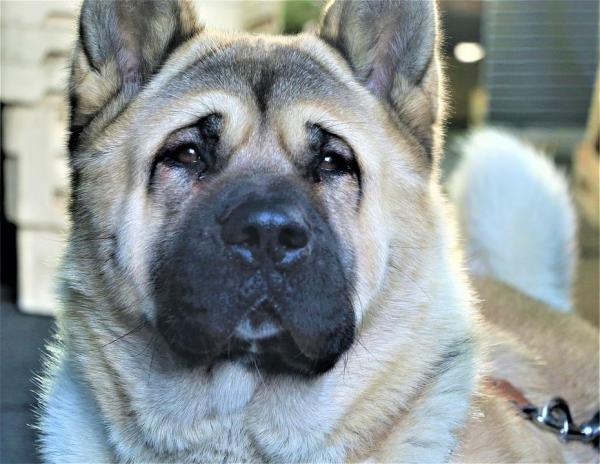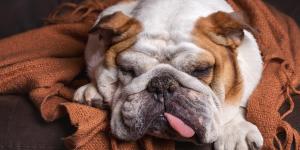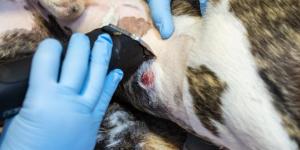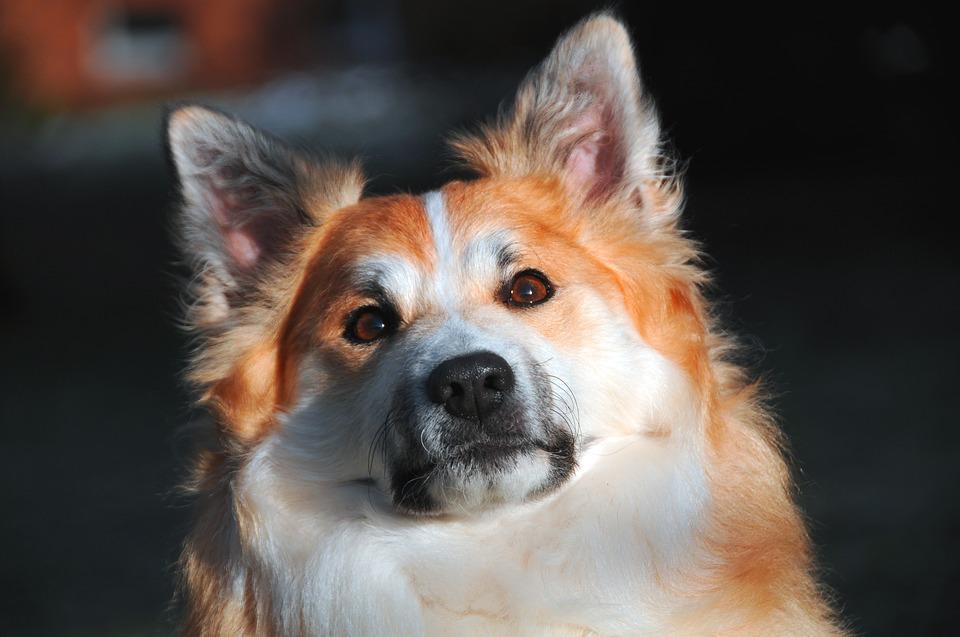My Dog Has a Swollen Face



See files for Dogs
The facial shape of our dogs varies greatly. Some have deer-like faces with long snouts and flat heads. Others have big round faces with lots of folds. In the latter category, it can be difficult to tell if a dog's face is swollen. This is why we need to be very observant when caring for our dog's well-being. If a dog's face is noticeably swelling, it means there is inflammation. Inflammation in a dog's face can come from various sources. Whether an allergic reaction, dental problems, tumors or any variety of concerns, we need to find out the cause of the swelling. A trip to the veterinarian is essential.
If you are wondering why my dog has a swollen face, AnimalWised is here to help. We look at the various causes of why there may be facial swelling. While we look at the various treatment options available, we need to reiterate the importance of being treated by a qualified veterinary health professional.
My dog has a swollen snout
The first thing to do when we observe our dog has a swollen face is to find the exact location of the inflammation. Swelling can occur in almost any part of the head, neck or face of the dog. Determining the location will give us clues to the cause. For example, if the swelling is visible on the snout of the dog, it is possible the inflammation is caused by dental problems inside their mouth.
We will also need to observe for other symptoms which might be present. Whatever the cause of swelling in a dog's face, the medical picture will vary. We will need to tell the veterinarian of any other symptoms present as this will help them to reach a diagnosis more quickly.
Here are some causes of a swollen snout in dogs:
- Dental problem: when a tooth is infected, the antibodies working to fight the infection can cause visible inflammation. If an abscess develops, the swelling will be accompanied by pain. Signs of pain are not always very evident in dogs due to their strong resilience. They may isolate themselves or lose their appetite, another reason we need to look for concurrent symptoms. A severe infection will lead to the cheek swelling and the dog unable to eat due to the discomfort.
- Tooth extraction: if you have taken the dog to have their dental problem dealt with, it is possible they will have an extraction. If the dog has a swollen face after a tooth extraction, it is possible they will have a ‘dry socket’, this is when the area of the tooth extraction is swollen. Another infection of the socket is possible, in part due to the fact dogs will often be indiscriminate with what they put in their mouths. Another veterinarian visit will be needed to treat the infection, usually with antibiotics.
- Foreign body: if a foreign body enters the skin of a dog's snout, swelling can occur due to bacteria entering the wound. Depending on the dog's overall immunity and the severity of the problem, the swelling will usually go away on its own. If it gets worse and does not heal quickly, you will need to take them to the vet. It is possible the foreign body has lodged itself into the dog's flesh and will need to be removed.
- Infection: bacterial infections can cause various problems, often leading to abscesses which need to be drained (see below). However, viral and fungal infections can also lead to a severe swollen face. One case in an Egyptian veterinary clinic shows how a Mucor fungus species caused very acute swelling underneath the eye, while the lips, gums, teeth and tongue remained normal[1]. Despite this, the fungus continued to spread and the dog had to be euthanized, showing again how important is early intervention.
- Bee sting: another cause of facial swelling in dogs can occur on any part of the face or body, not just the snout, is a bee sting. The bee most often leaves their stinger in the skin of the dog, especially if they scratch at their face. The venom from the sting is pumped into the skin and causes redness, swelling and pain. Pheromones are also released which can attract other bees to try to sting the dog as a form of defense. Most bee stings will go away in a day or two, but it is possible the dog will suffer an allergic reaction and go into anaphylactic shock. In these cases emergency intervention is essential. Most other insects will not envenomate the dog, but they can bite.
- Parasites: an infestation by various external parasites can cause swelling on the face. The parasite may eat at their skin and agitate it, causing inflammation. They may even lay eggs in the skin, which can cause serious swelling as they develop. Not all parasites will cause swelling, but many may be accompanied by other symptoms such as red skin and hair loss.
- Tumor: although this is less likely than some of the other causes of a swollen face in dogs, tumors are possible. Tumors are a type of neoplasm, a mass of tissue growth which can occur for various reasons. Some are benign which poses little threat to the dog's overall health, but may still be removed for practical or preventive reasons. Malign tumors such as cancer will need to be treated, sometimes with chemotherapy or surgical removal. Prognosis depends on the progression of the underlying disease.
- Dog bite: when dogs fight, they can get aggressive and will attack vulnerable parts of their opponent. Attacking the face is a good way for a dog to win a fight quickly. If a dog's face is swollen after a dog bite, it is possible the bacteria in the other dog's mouth has infected the wound site. Treatment to clean the wound and, potentially veterinary prescribed antibiotics, will be required. Other animals can also attack and bite or scratch the dog's snout with similar repercussions.
If the dog is suffering from inflammation on the snout or any part of the face, it is possible the veterinarian will also prescribe anti-inflammatory drugs (NSAIDs) to reduce both the swelling and the pain. However, treatment of the underlying cause is the most important, which is why it is important to take the dog to a veterinarian.

My dog has a swollen face and is vomiting
The above causes of swelling on a dog's snout may also explain other types of facial swelling. However, some areas may be more linked to specific causes than others. Tumors can occur on the snout, on the eye or in almost any type of tissue. The dog's symptomology is also important. If you see your dog is vomiting as well as having swelling on the face, then we need to consider an allergic reaction.
As we state above, an allergic reaction can be caused by bee stings. However, allergies can present in various ways. The dog may be allergic to food, cleaning product, plant or any of the various allergen present in their environment. An allergic reaction may be fairly mild. If the allergy is to a foodstuff or something they have ingested, it is possible only mild gastrointestinal problems such as vomiting or diarrhea may occur.
An extreme allergic reaction, known as anaphylaxis, can cause swelling to the face. The eyes are commonly affected, sometimes swelling so much the dog's eyes are unable to open. They will also be red and swelling is likely present on other parts of their face. Vomiting usually occurs with food allergies, but these can be difficult to diagnose. You will need to take the dog to the veterinarian and try to remember if they have eaten anything specific which could have set off the reaction.
With other types of reaction, it is possible the allergen has come in contact with their skin. This can result in various types of swelling, including allergic contact dermatitis (ACD). ACD will present in swelling, redness and itchiness. If your dog is scratching at their face or eyes, it is because their skin is irritated.
All that needs to happen for an ACD reaction is for the allergen to come in contact with the dog. This can be difficult if the reaction occurs outside and we do not know exactly what they have interacted with. If the dog's allergy is acute, the reaction can occur with spores or mircrobes in the air instead of direct physical contact. Allergic reactions to insects often occur on the dog's nose and lips since they may go in to sniff something and the insect bites in self-defense.
Severe anaphylactic shock will have many symptoms, including vomiting, diarrhea, incontinence, lethargy or even collapse. One of the most common causes of allergic reactions in dogs is a reaction against vaccinations. This is why it is important for the dog to stay in the clinic for observation after they are given vaccinations. This is the best place for them to be in case they need treatment.
My dog has swollen eyes
Aside from allergic reactions, there are some specific reasons why a dog's eyes will be affected. If we see pus or other types of ocular secretion, then it is possible there is an infection. One fairly common cause is a retrobulbar hematoma. A hematoma is bleeding which occurs outside of the normal blood vessels and the retrobulbar space is the area behind the eye globe. This can occur if there has been severe trauma to the eye, perhaps occurring during a fight with another animal. Drainage is one of the most important aspects of treatment[2], something which needs to be done by a qualified veterinary medical professional.
Cherry eye is a condition where the nictitating membrane (otherwise known as the third eyelid) is prolapsed. The cause of such prolapse can be varied, whether through direct trauma, eye conditions such as conjunctivitis or infection. While there is some evidence to suggest that third eyelid prolapse in dogs has genetic risks, they are not well understood and evidence is inconclusive[3].
Whether the dog's eye swelling is due to trauma, infection or any underlying cause, veterinary intervention is essential. They will be able to treat the problem directly and will be in the best position to reduce swelling without affecting the dog's vision.

My dog has swollen jowls
The jowls are the area which encompass both the dog's cheeks and saggy areas underneath the chin. If swelling occurs here, it can be due to various factors related to those above. If an allergic reaction occurs, the entire face can swell up, including the jowls.
However, there is some swelling which may only affect these parts of the dog's face. For example, the mandibular lymph nodes are located underneath the dog's jaw. When pathogens are affecting a dog such as those which cause a viral infection, the lymph nodes swell. The swelling may not always be visible, but in serious infection cases, the swelling will be seen in the jowls.
Abscesses can also appear on the dog's neck. A submandibular abscess is one which is under the jaw and can have various causes. Abscesses will have pus coming out of them and acute ones will need to be drained and treated. We need to be particularly careful with abscesses on the dog's head as they are an infection close to the brain.
Finally, tumors on a dog's neck can cause swelling. The swollen jowls will be hard to the touch and may be part of the lymph nodes, throat or other tissue. For confirmation of a cancer diagnosis, the veterinarian will likely need to take a biopsy and analyze it in a laboratory.

This article is purely informative. AnimalWised does not have the authority to prescribe any veterinary treatment or create a diagnosis. We invite you to take your pet to the veterinarian if they are suffering from any condition or pain.
If you want to read similar articles to My Dog Has a Swollen Face, we recommend you visit our Other health problems category.
1. Awad, A., & El-Satar, A. A. (2015). A Case of Subcutaneous Destructive Facial Swelling in a Dog Caused by Mucor Species. Journal of Veterinary Science & Medical Diagnosis, 4(3).
https://www.scitechnol.com/effect-topical-application-iodine-plasma-inorganic-iodine-levels-deficient-dairy-animals-8Rds.php?article_id=2383
2. Loughran, C. M., et al. (2016). Unilateral Retrobulbar Hematoma Following Maxillary Nerve Block in a Dog. J Vet Emerg Crit Care (San Antonio), 26(6), 815-818.
https://www.ncbi.nlm.nih.gov/pubmed/27155297
3. Edelmann, M. L., et al. (2013). Investigating the Inheritance of Prolapsed Nictitating Membrane Glands in a Large Canine Pedigree. Vet Ophthalmol, 16(6), 416-422.
https://onlinelibrary.wiley.com/doi/full/10.1111/vop.12015
1. Carlson, D. G., et al. (2007). Dog Owner's Home Veterinary Handbook. London: Howell Book House.
https://www.amazon.com/Dog-Owners-Home-Veterinary-Handbook/dp/0470067853







